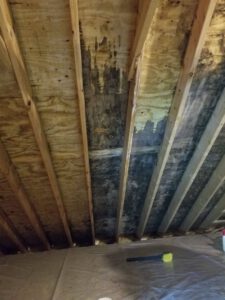There are many steps to mold remediation but the first step is prevention. Check for leaks and leak-prone areas and clean surfaces as thoroughly as possible using a disinfectant and water. After cleaning surfaces, you should paint the affected areas with mold-resistant paint to prevent regrowth. Continue to follow these steps until you are confident that you have fully eradicated the mold problem.
Cleaning surfaces for mold removal is an important part of mold remediation. Mold can grow on virtually any surface in your home, including wood surfaces. Not only is it ugly, but it can also cause health problems because it releases allergens. To effectively remove mold, you need to take proper safety measures, including wearing respiratory protection.
You can use bleach as an effective cleaning solution. Bleach is a chemical compound that is extremely effective at killing mold when it comes into contact with it. However, it’s not advisable to use bleach on non-porous surfaces. It’s also important to wear protective equipment, such as a respirator and goggles. In addition, if possible, open all the windows and doors in the room. Lastly, you should not use bleach on surfaces that are touched by small children.
The most common type of mold in homes is mildew. This type of mold grows on damp and warm surfaces. It begins as a light, powdery colony and eventually grows into a black or brown substance. To determine whether mildew is present on a surface, you can use household chlorine bleach to test it.
Another natural product for mold removal is borax. This mineral salt is a good cleaner because it does not release toxic fumes. It is widely available at grocery stores and costs only a few dollars. It works by soaking the surface, which is essential for mold removal.
If you have a mold problem in your home, you may want to consider using antimicrobial solutions. These are chemicals that are specifically designed to kill mold and are available at big-box hardware stores. Many professionals use these solutions, and they have shown good results with homeowners. However, you should be sure to read the label before using these solutions. They can cause serious health issues if improperly used.
Some of these products are fast-acting and kill mold right away. Some require as little as a minute of application, while others need more time. It’s important to follow the manufacturer’s instructions when using an antimicrobial solution, as well as follow the steps necessary to prevent the regrowth of mold.
When a building is damaged, it becomes a breeding ground for harmful bacteria and mold. To protect yourself and your family from such hazards, use a durable antimicrobial. A world leader in antimicrobial formulations offers water-soluble antimicrobial solutions that are easy to use and apply. Their antimicrobials also protect against odors, which can occur as a result of bacteria.
Some antimicrobial solutions require PPE, and some can emit harmful fumes. A plant-based antimicrobial like MPI Antimicrobial, however, doesn’t emit volatile organic compounds or cause other risks. This makes it a great choice for both interior and exterior mold remediation jobs.
Using HEPA filters for mold removal can improve the quality of air in your home. The filters clean the air in your home as air passes through the ducts of your heating and air conditioning system. This air carries a wide variety of contaminants, including mold spores and irritants from outside. The filters trap these particles and improve indoor air quality.
A HEPA filter can remove most of the mold spores and other particles from the air. However, the filter is not completely effective against mold, and some mold can get past the filter. As a result, you must address the underlying causes of the mold before using a HEPA filter for mold removal.
HEPA stands for high-efficiency particulate air. The purpose of these filters is to remove the smallest particles. These smallest particles can be as small as four micrometers in size. The air scrubbers are made with three filters; the first two catch larger particles, and the third filter captures the smallest ones.
HEPA filters are made of a tight mesh of glass fibers. While these filters are great for mold removal, they can also be costly. Because these filters capture so many contaminants, they must be cleaned regularly. Some of these filters are disposable, but many can be washed and reused.
